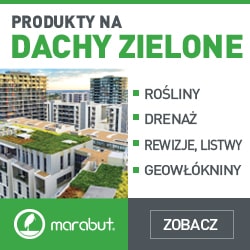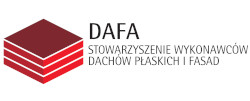Polyurethane adhesive for mineral wool-based ETICS
dr inż. Ewa Sudoł, Instytut Techniki Budowlanej; Zakład Inżynierii Materiałów Budowlanych
ORCID: 0000-0003-2902-0497
dr inż. Ewelina Kozikowska, Instytut Techniki Budowlanej; Zakład Inżynierii Materiałów Budowlanych
ORCID: 0000-0001-7323-3663
Adres do korespondencji: Ten adres pocztowy jest chroniony przed spamowaniem. Aby go zobaczyć, konieczne jest włączenie w przeglądarce obsługi JavaScript.
DOI: 10.15199/33.2021.06.03
Oryginalny artykuł naukowy
Streszczenie. Stosowanie klejów poliuretanowych w ETICS ograniczone jest obecnie, w świetle wytycznych udzielania europejskich ocen technicznych, do mocowania płyt z EPS. W artykule zapisano próbę oceny użyteczności kleju poliuretanowego do systemu ETICS z lamelową wełną mineralną, z uwzględnieniem podłoży mineralnych oraz drewnianej konstrukcji szkieletowej. Wykonano badania przyczepności, które uzupełniono analizą SEM struktury kleju. Analizę przeprowadzono z uwzględnieniem wpływu rodzaju podłoża oraz warunków cieplno-wilgotnościowych. Uzyskane wyniki badań stanowią przesłankę dla pozytywnej oceny użyteczności budowlanej kleju poliuretanowego jako komponentu ETICS z wełną mineralną.
Słowa kluczowe: ETICS; klej poliuretanowy; wełna mineralna; przyczepność; drewniany budynek szkieletowy.
Abstract. In the light of the European Assessment Documents the use of polyurethane adhesives in ETICS is currently limited to fixing only EPS. In this study, we evaluate the usability of the polyurethane adhesive for ETICS with lamella mineral wool, intended for thermal insulation of walls made of concrete or masonry elements, as well as with a timber frame structure. Band strength tests were carried out, supplemented by SEM analysis of the adhesive structure. The analysis was carried out taking into account the influence of the type of substrate and the temperature and humidity conditions. The research results obtained in the work constitute a premise for a positive assessment of the construction usability of polyurethane adhesive as a component of ETICS with mineral wool.
Keywords: ETICS; polyurethane adhesive; mineral wool; bond strength; timber frame building.
Literatura
[1] Austrian Institute of Construction Engineering (OIB). 2015. ETA-14/0312; Austrian Institute of Construction Engineering (OIB): Vienna, Austria.
[2] Dzhamuev B. K. 2020. „Increasing the Solidity of MasonryWalls Made of Cellular Concrete Blocks ofAutoclave Hardening by using Polyurethane Foam Adhesive Composition as a Masonry Solution”. J. Phys. Conf. Ser. 1655, 012085, DOI: 10.1088/1742-6596/1655/1/012085.
[3] European Organization for Technical Assessment (EOTA). EAD 040083-00-0404 European Assessment Document External Thermal Insulation Composite Systems (ETICS) with Renderings; 2020.
[4] European Organization for Technical Assessment (EOTA). EAD 040089-00-0404 European Assessment ETICS with Renderings for the Use on Timber Frame Buildings; 2017.
[5] European Organization for Technical Assessment (EOTA). 2013. ETAG 004: Guideline for European Technical Approval of External Thermal Insulation Composite Systems (ETICS).
[6] European Committee for Standardization (CEN). EN 13162: 2015 Thermal Insulation Products for Buildings. Factory Made MineralWool (MW) Products. Specification; 2015.
[7] European Committee for Standardization (CEN). EN 13986: 2015Wood-Based Panels for Use in Construction. Characteristics, Evaluation of Conformity and Marking; 2015.
[8] European Organization for Technical Assessment (EOTA). 2014. TR 46 Test Methods for FoamAdhesives for External Thermal Insulation Composite Systems (ETICS).
[9] Kurańska M., R. Barczewski., M. Barczewski, A. Prociak, K. Polaczek. 2020. „Thermal Insulation and Sound Absorption Properties of Open-Cell Polyurethane Foams Modified with Bio-Polyol Based on Used Cooking Oil”. Materials 13, 5673. DOI: 10.3390/ma13245673.
[10] Kvande T., N. Bakken, E. Bergheim, J. Thue. 2018. „Durability of ETICS with Rendering in Norway – Experimental and Field Investigations”. Buildings 8: 93. DOI: 10.3390/buildings8070093.
[11] Liisma E., L.-M. Raado, S. Lumi, I. Lilli, V. Sulkatko. 2001. „The Effect ofMoisture Content of Insulation Boards on the Adhesion Strength of ETICS”. Recent Adv. Civ. Eng. Mech. 66: 103 – 108.
[12] Michalak J., S. Czernik, M. Marcinek, B. Michałowski. 2020. „Environmental burdens of External Thermal Insulation Systems. Expanded Polystyrene vs. Mineral Wool: Case Study from Poland”. Sustainability 12: 4532. DOI: 10.3390/su12114532.
[13] Pasker R. 2017. The European ETICS market– Do ETICS sufficiently contribute tomeet political objectives? In Proceedings of the 4th European ETICS Forum, Warsaw, Poland, 5 October 2017; European Association for External Thermal Insulation Composite Systems (EAE): Baden-Baden, Germany.
[14] Pasztory Z., P. N. Peralta, S. Molnar S, I. Peszlen. 2012. „Modelling the hydrothermal performance of selected North American and comparable European wood-frame house walls”. Energy Build. 49: 142 –1 47. DOI: 10.1016/j.enbuild. 2012.02.003.
[15] Ramos N. M. M., M. L. Simões, J. M. P. Q. Delgado, V. P. De Freitas. 2012. „Reliability of the pull-off test for in situ evaluation of adhesion strength”. Constr. Build. Mater. 31: 86 – 93. DOI: 10.1016/j.conbuildmat. 2011.12.097.
[16] Strobech C. 1990. „Polyurethane adhesives”. Constr. Build. Mater. 4: 215–217.
Przyjęto do druku: 03.05.2021 r.
Materiały Budowlane 06/2021, strona 41-44 (spis treści >>)






























